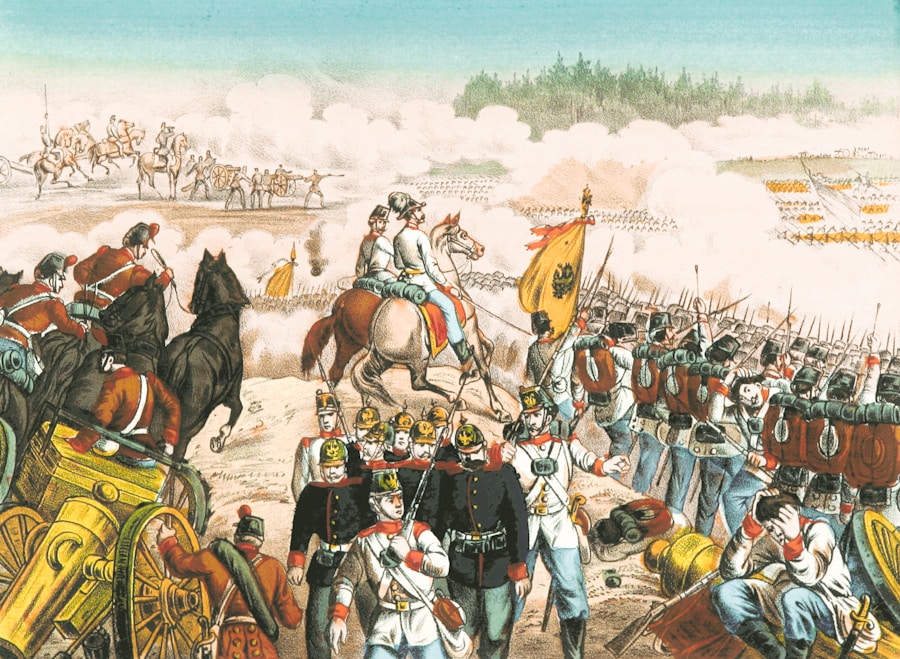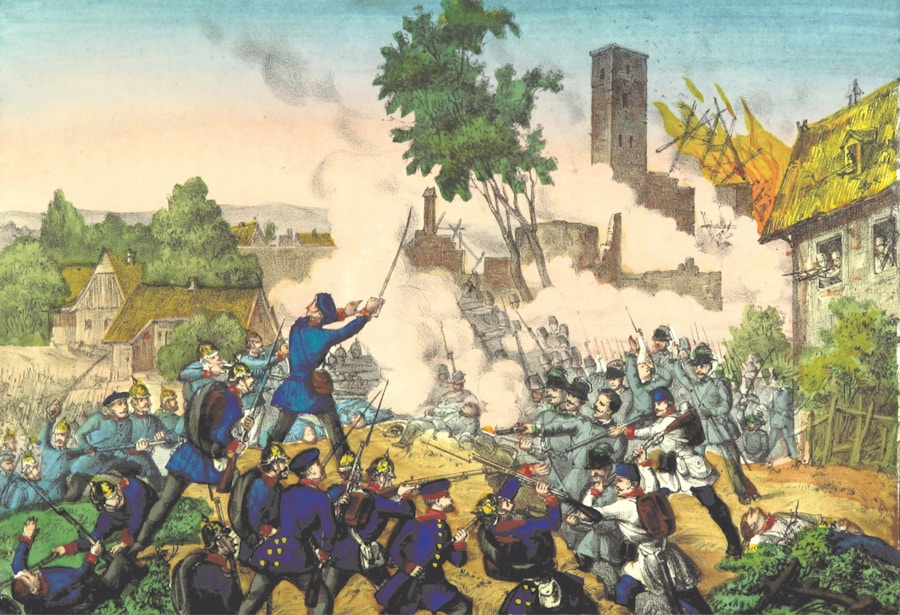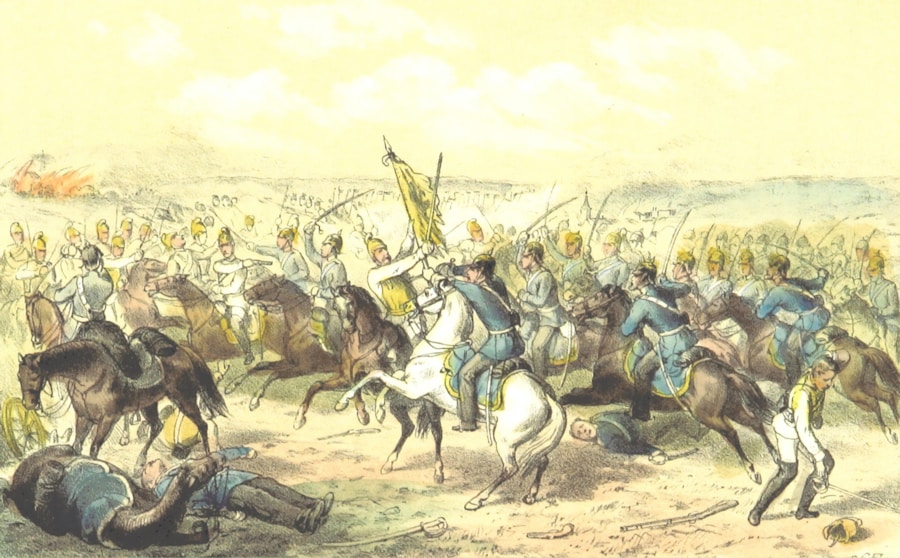The Revolt of 1857, often referred to as the First War of Indian Independence, marked a significant turning point in the history of British colonial rule in India. This uprising was not merely a spontaneous reaction to specific grievances but rather a culmination of long-standing discontent among various sections of Indian society. The revolt began in May 1857 and lasted until 1858, involving a wide array of participants, including sepoys, peasants, and local rulers.
The immediate trigger was the introduction of the Enfield rifle, which required soldiers to bite off the ends of greased cartridges rumored to be made from cow and pig fat—an affront to both Hindu and Muslim religious sentiments. However, the roots of the revolt ran much deeper, encompassing economic exploitation, social injustices, and political disenfranchisement. The revolt spread rapidly across northern and central India, with significant centers of resistance emerging in places like Meerut, Delhi, Kanpur, and Jhansi.
The uprising was characterized by a diverse coalition of rebels who sought to challenge British authority and restore their own sovereignty. While the revolt was ultimately suppressed by British forces, it left an indelible mark on the Indian psyche and laid the groundwork for future movements against colonial rule. The events of 1857 are often viewed through various lenses—military, political, and social—each offering insights into the complexities of colonial India and the multifaceted nature of resistance against imperialism.
Key Takeaways
- The Revolt of 1857, also known as the Indian Mutiny or the First War of Independence, was a significant event in Indian history.
- The causes of the Revolt of 1857 included social, economic, and political factors, as well as the introduction of new religious and cultural practices by the British.
- The nature of the Revolt of 1857 was characterized by widespread participation from various sections of Indian society, including soldiers, peasants, and rulers.
- The significance of the Revolt of 1857 lies in its role as a turning point in the history of British rule in India, leading to the end of the East India Company’s control and the beginning of direct British rule.
- The impact of the Revolt of 1857 on Indian society and British rule was profound, leading to changes in policies, administration, and attitudes towards Indian culture and religion.
- The legacy of the Revolt of 1857 is seen in its influence on the Indian freedom struggle and the emergence of nationalist movements, as well as its lasting impact on the relationship between India and Britain.
Causes of the Revolt of 1857
Military Grievances
One of the primary factors contributing to the revolt was the widespread discontent among sepoys in the British East India Company’s army. These soldiers were subjected to harsh discipline, low pay, and a lack of respect for their cultural practices. The introduction of new military regulations, particularly the use of the Enfield rifle, was perceived as a direct assault on their religious beliefs.
Economic Factors
Economic factors also played a crucial role in fueling the revolt. The British colonial policies had led to widespread economic distress among various classes in Indian society.
Peasants were burdened with exorbitant land revenue demands, leading to agrarian distress that manifested in revolts across rural India.
Political Alienation
Additionally, the annexation policies pursued by the British, such as the Doctrine of Lapse, alienated local rulers and nobility, further contributing to a sense of betrayal and resentment against colonial rule.
Nature of the Revolt of 1857

The nature of the Revolt of 1857 was complex and varied across different regions and communities. It was not a singular movement but rather a series of localized uprisings that coalesced into a broader resistance against British rule. The revolt saw participation from diverse groups including sepoys, zamindars (landlords), peasants, and even some sections of the urban middle class.
Each group had its own specific grievances and motivations for joining the uprising. For instance, while sepoys were primarily motivated by military concerns and religious sentiments, zamindars were driven by economic interests and a desire to retain their feudal privileges. The revolt also exhibited a significant degree of organization and leadership.
Figures such as Rani Lakshmibai of Jhansi, Bahadur Shah II (the last Mughal emperor), and Tantia Tope emerged as prominent leaders who galvanized support for the cause. The rebels established their own governance structures in several regions, attempting to create an alternative authority to British rule. However, despite these efforts at organization, the revolt lacked a unified command or coherent strategy, which ultimately contributed to its failure.
The diverse nature of the uprising also meant that it was marked by instances of communal violence and retribution against perceived collaborators with the British.
Significance of the Revolt of 1857
The significance of the Revolt of 1857 extends beyond its immediate outcomes; it represents a critical juncture in Indian history that reshaped the relationship between India and Britain. The revolt challenged the legitimacy of British rule and exposed the vulnerabilities within the colonial administration. It served as a wake-up call for British authorities who realized that their control over India was not as secure as they had believed.
In response to the uprising, the British government took direct control over India from the East India Company, leading to significant administrative changes that aimed to consolidate British power. Moreover, the revolt had profound implications for Indian society. It ignited a sense of nationalism among various sections of society that had previously been fragmented along regional, religious, and caste lines.
The shared experience of resistance fostered a collective identity that would later fuel subsequent movements for independence. The revolt also prompted discussions about reform within Indian society itself, as leaders began to recognize the need for social and political unity in order to effectively challenge colonial rule.
Impact of the Revolt of 1857 on Indian society and British rule
The impact of the Revolt of 1857 on Indian society was both immediate and long-lasting. In its aftermath, British authorities implemented a series of punitive measures aimed at suppressing dissent and restoring order. This included widespread reprisals against suspected rebels and collaborators, leading to significant loss of life and property.
The brutal suppression served to instill fear among the populace but also galvanized anti-colonial sentiments that would simmer beneath the surface for decades to come. On a broader scale, the revolt catalyzed changes in British policy towards India. The British government recognized that direct control was necessary to maintain stability in India, leading to the establishment of the British Raj in 1858.
This shift brought about significant administrative reforms aimed at improving governance but also reinforced colonial authority. The British sought to project an image of benevolence while simultaneously tightening their grip on power through military presence and surveillance.
Legacy of the Revolt of 1857

The Revolt’s Impact on India’s Struggle for Independence
The revolt laid bare the deep-seated grievances that would fuel future struggles against colonial rule and inspired generations to envision an independent India free from foreign domination.
A Symbol of Resistance in Popular Culture
The revolt has been memorialized in various forms—literature, art, and popular culture—serving as a symbol of resistance against oppression. It has become an integral part of India’s national narrative, representing not only a struggle for political freedom but also a quest for social justice and equality.
Enduring Significance and Collective Action
In conclusion, while the Revolt of 1857 may have been suppressed militarily, its significance endures as a testament to India’s complex history with colonialism and its enduring quest for self-determination. The uprising serves as a reminder that resistance can take many forms and that collective action can emerge from diverse grievances when faced with oppression.
One related article to the Revolt of 1857: Nature and Significance is “Understanding Sociological Perspectives” which delves into the various sociological theories and perspectives that can help us analyze historical events like the revolt. To gain a deeper understanding of the social dynamics at play during the revolt, exploring different sociological frameworks can provide valuable insights. You can read more about this topic here.
FAQs
What was the Revolt of 1857?
The Revolt of 1857, also known as the Indian Rebellion of 1857 or the First War of Independence, was a major uprising in India against the rule of the British East India Company.
What were the causes of the Revolt of 1857?
The causes of the Revolt of 1857 included the introduction of new Enfield rifles with cartridges greased with animal fat, which offended the religious beliefs of both Hindu and Muslim soldiers. There were also economic grievances, social and cultural discontent, and a general feeling of resentment towards British rule.
What was the nature of the Revolt of 1857?
The Revolt of 1857 was a widespread and coordinated uprising that involved both Indian soldiers (sepoys) and civilians across various regions of India. It was characterized by acts of rebellion, violence, and the establishment of parallel administrations in some areas.
What was the significance of the Revolt of 1857?
The Revolt of 1857 had significant implications for the future of India. It led to the end of the rule of the British East India Company and the transfer of power to the British Crown. It also sparked a renewed sense of nationalism and paved the way for the Indian independence movement.






















+ There are no comments
Add yours